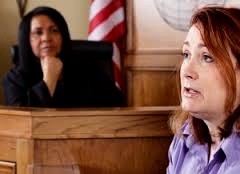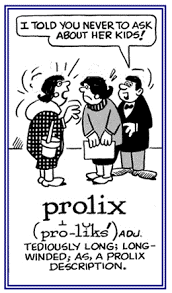Careful thought should be put into choosing the right executor for each will maker.
Some of the preliminary considerations are as follows.
A. The Nature of the Client’s Affairs
· Are there any active business interests?
· Are the business interests to be carried on after the testator’s death or liquidated?
• Are there any assets sited in a foreign jurisdiction?
· Does the testator have any business dealings with the beneficiaries and/or potential
executors?
· Have loans/gifts been made to any one or more of the testator’s children?
· Is there any personal property requiring special expertise (e.g., copyright, valuable art,
etc.)?
· How large is the estate and how complex are its investments?
B. What is the Will Plan
· Is there an outright distribution?
· If grandchildren take by substitution are there contingent infant shares to be held in trust
to age 19, 25, 30?
· Is there a trust for a surviving spouse or handicapped child? How long might it run?
· Is there a discretion to encroach on capital?
C. Who are the Players
Testators often avoid talking about the needs and capacities of their family members making it
the solicitor’s job to tactfully elicit this information. The spouse may be particularly ill equipped
to deal with even the simplest of estates or there may be a “black sheep” in the family that the
parents are reluctant to disclose.
Often a child will be singled out by the parents as the proposed executor on the death of the
remaining parent. If you ask, “is he or she the most capable” there will often be a resounding
affirmation. If you ask, “is he or she somewhat resented by his or her siblings” you will receive
a grudging admission. If you then ask the parents to speculate as to how the dynamic will
change when they are not there to “keep the peace” you may find your clients reconsidering their
decision. Similarly, you should give your clients pause for reflection by pointing out that the
number of players is not confined to their children, but includes for all practical purposes the
children’s spouses.
D. What are the Conflicts of Interest
It is important to note that the question is not, “are there any conflicts of interest?” but, “what are
the conflicts of interest?” The reason for the emphasis is that unless you have an executor who is
also the sole beneficiary or one who is disinterested and proposes to charge no fee, there will be,
to a greater or lesser extent, a conflict of interest arising in the course of the administration.
Two of the more obvious conflicts of interest involve the appointment of a business partner as
executor and the appointment of either the life tenant or capital beneficiary as trustee empowered
to make capital encroachments. Consider whether appointing the life tenant and a remainderman
to act as co-trustees is really a solution or simply an invitation to disaster. Also consider the
position of the executor/beneficiaries who have received financial assistance from their parents
under an arrangement that they “pay us if and when you can.” To the recipient this may have
been perceived as a nice way of making a gift, but to the donor (and the other children) may
simply have been a tactful way of settling the terms for repayment of the loan. Particularly
insidious are the problems presented by in specie distributions of “sentimental” property. Who
gets the family cottage and on what terms? If the potential executor is, as is often the case, the
one closest to home with the most extensive connection to the cottage should he or she be
potentially disqualified from receiving it without the consent of the siblings?*
E. Making the Choice
Once you have canvassed the foregoing matters with your client you will be in a much better
position to advise on the appropriate choice for the role of executor and trustee.
1. Family Members
The limitations inherent in choosing the executor within the family are often offset in the client’s
mind with the notion that there will be significant cost saving. When the client realizes that the
executor may in fact delegate substantially all of the work to solicitors (and accountants) this
will no longer be a substantial advantage outweighing the pitfalls alluded to earlier. The client
may want to consider a co-appointment of one or more family members with a professional
advisor or trust company. Where there could be ongoing conflicts of interest, such as a
discretion to encroach on capital in favour of a second spouse, it is often a useful compromise to
arrive at a co-appointment with only the “independent trustee” empowered to make the
discretionary decision in which the “family trustee” has a personal interest. In a discretionary
trust for a handicapped child consider whether the Public Trustee might challenge (under the
Wills Variation Act) the appointment of a sibling as trustee where that person also has a
remainder interest in the trust.
2. Trust Companies
While individual trust companies have received some deserved criticism for the handling of
particular estates, it is the writer’s view that they do not deserve much of the “bad press” that
they seem to enjoy with the testamentary public. If you were to inquire into a testator’s aversion
to the corporate executor you would find that he is often relying on a second or third-hand story
involving a penurious widow left at the mercy of an unfeeling trustee under a will that has
unfortunately been overtaken by inflation. This is usually not the fault of the executor and
trustee, but rather a reflection of the testator’s values, the mores of his time, and 20th Century
economic realities.
Even if an in specie clause would permit executors to appropriate specific assets to their share of residue,
valuation of the asset can often be a divisive issue.
(a) Corporate Trustees Bring Advantages to the Administration
(I) Permanence
Notwithstanding the recent spate of mergers and acquisitions few practical difficulties are
occasioned as one corporate entity segues into another on the strength of an authorizing order in
counsel or regulation. For trusts having a lengthy anticipated duration a corporate presence is
usually desirable.
(ii) Impartiality
The corporate fiduciary has no axe to grind with either a life tenant or a remainderman.
Discretionary decisions involving the application of the even-handed rule are usually ratified at a
committee level providing an additional buffer against any individual differences or personality
difficulties that may arise with particular trust officers. On the other hand, the spectre of an
infant beneficiary attaining the age of majority and suing the trustee for diminution of the capital
usually dictates that the trustee be provided some direction in the instrument as to the extent to
which it is to exercise its discretion or encroach on capital, often by confirming the displacement
of the even-hand rule.
(iii) Conservatism
Most corporate fiduciaries will delight in telling you that they were already “well into cash”
when Black Monday finally arrived in October 1987. Of course, they will be less likely to tell
you that they have not realized the spectacular gains seen recently in the market at large, but
your testator may prefer that their focus be on the preservation of capital. There is also the
added advantage in smaller trusts of diversification through the use of unit or pool trusts in
which individual estates may be invested across a broad range of securities which would not be
practical if the shares were individually held in each estate. Individual trustees, it appears, may
well be precluded from attaining this same sort of diversification by investing in mutual funds as
this may be construed as an improper delegation of their duties. See comments on page 14
and 15.
(iv) Deep Pockets
The prospect of, say, a grandchild suing his uncle on attaining the age of majority for
maladministration of his trust fund can often be an unpleasant one for the client. A similar
concern is seldom, if ever, expressed at the thought of a trust company accounting to a
beneficiary for its negligence. Particularly where the estate is large and its assets are complex it
may simply be unfair for the testator to burden any one or more of his family members with the
sole stewardship of such an estate. Bad investment advice or a failing real estate market can
quickly create personal rifts, if not destructive litigation, between the executor and his fellow
family members.
(v) Higher Standard of Care?
Although the Fates case (1977), 2 S.C.R 302 (S.C.C.) concludes there is no difference in the
standard of care required of a professional trustee over that of a lay trustee, it would seem that a
professional trustee may not be as readily excused for its breaches as its lay counterpart. Some
English authority (Bartlett v. Barclays Bank Trust, [1980] 1 ALL ER 139 Ch.D.) suggest,
however, that because a professional trustee holds itself out as having special knowledge and
expertise it will also be held to a higher standard of care. Such a higher duty has also been
adopted in the United States in the uniform Probate Code. All of which suggest to Professor
Waters that in determining whether “the conduct of the particular Trustee was lacking in
ordinary care and prudence . .. it is possible for the Court to expect more out of the professional
Trustee then of lay Trustees.” (Waters: Law of Trusts in Canada, 2nd edition, at 753).
(b) Considerations Militating Against the Choice of a Trust Company
(i) Expense
It is a fact that trust companies are activiely seeking to be the trsuees of their cleint’s affairs, but it ash to be noted that the trsut companies reuire a minimum amount of wealth before theya re preared to do so
As businesses, corporate fiduciaries account to their shareholders and are expected to produce a
good return. Over the last few years there has been a trend on the part of most trust companies
to push the fee envelope upwards to claim at or near the maximum fee available in estates (under
$300,000). Nevertheless, cost conscious consumers of fiduciary services are often able to
negotiate fee agreements, particularly in larger estates, at percentages considerably lower than
the trust company might otherwise charge.
(ii) Inflexibility
It must be remembered that trust companies are essentially bureaucracies “with all the drawbacks
of bureaucracies — impersonality, unwillingness of personnel to make imaginative decisions, and
the presence of considerable red tape” (Canadian Tax Journal, Volume XXII (2) at 157). While
the conservatism inherent in such a bureaucratic organization may well afford a degree of
protection as discussed above, it has also led to the criticism that long-term trusts have suffered
an erosion of capital value by an excessive reliance on fixed income securities. Again, specific
enabling language in the investment provisions of the will as well as an expression of wishes as
to the exercise of trustee discretion (perhaps outside the will) can somewhat ameliorate these
concerns.
(c) The Professional as Trustee
Lawyers, and increasingly accountants, are often appointed by testators because of their
familiarity with the testator’s affairs. Consider the following:
(1) Is it proper for the solicitor to recommend his or her own appointment?
(2) Does the accountant or legal firm have the necessary infrastructure to conduct a timely
and efficient estate administration?
0) Does the professional have relationships with other family members which could create
difficulties? On a request for an encroachment, how does the “family solicitor” tell the
widow, whom he has also known for many years, that her spending is out of line?
(1) If the accountant’s firm audits the deceased’s company, should the accountant also
serve
( as the deceased’s executor?
(2) Are there efficiencies and/or economies if the legal and executor’s work are performed
under the same roof.
F. How Many Executors Should be Appointed
Obviously, the various permutations and combinations are endless and will depend on a close
analysis of the testator’s family and financial circumstances as discussed above. The following
factors will come into play.
It is strongly recommend that if more than one executor then have an odd number such as three be chosen with a provision that two may out vote the third if there is a dispute.
1. Efficiency of Administration
While face time, email , conference calls etc. have obviously aided
communication, there is still an element of unworkability in having a number of executors
scattered throughout the world. If there are ongoing trusts and it is intended that the trust be
resident for Canadian tax purposes, Thibideau v. The Queen, [1978] C.T.C. 539 suggests that the
residence of the majority of the trustees will be largely determinative of this issue.
If there are assets in foreign jurisdictions, consider whether or not there should be multiple wills appointing executors in the various jurisdictions allowing for parallel and localized administrations.
It is recommended that there be a separate will for each foreign jurisdiction with careful drafting so that one foreign will doesn’t revoke wills in other jurisdictions.
2. What are the Dynamics of a Majority Rule Provision?
If there are two family members and a professional trustee, should the professional trustee
always be a part of the majority? Consider restricting discretionary decisions to the “non-
interested trustee.”
3. To What Extent Should the Testator Choose Substitute Trustees as Opposed to
Leaving that Choice to the Surviving or Remaining Trustees?
As the testator only gets “one kick at the can” consider encouraging him to choose as many
capable people as possible to serve over the anticipated duration of the trust. The “first” choice
of trustee should not necessarily be discarded for reasons of age where it is important to set the
right tone for the administration and provide an opportunity to “train” future trustees.










